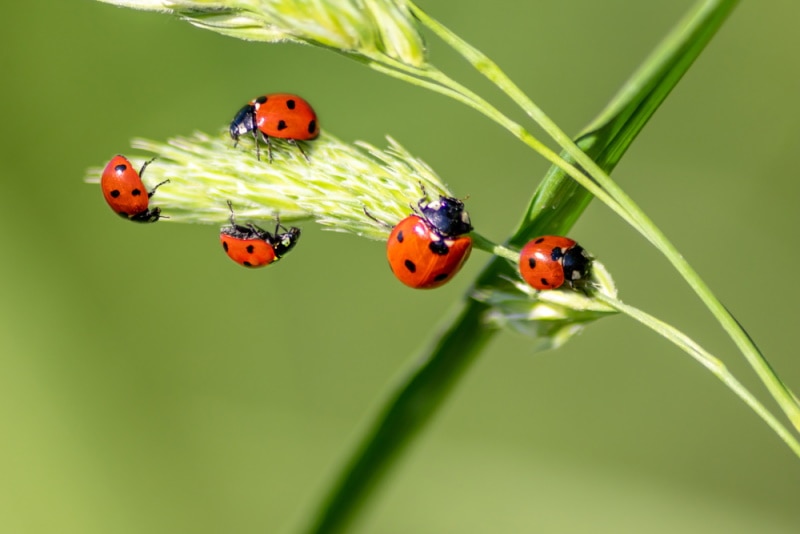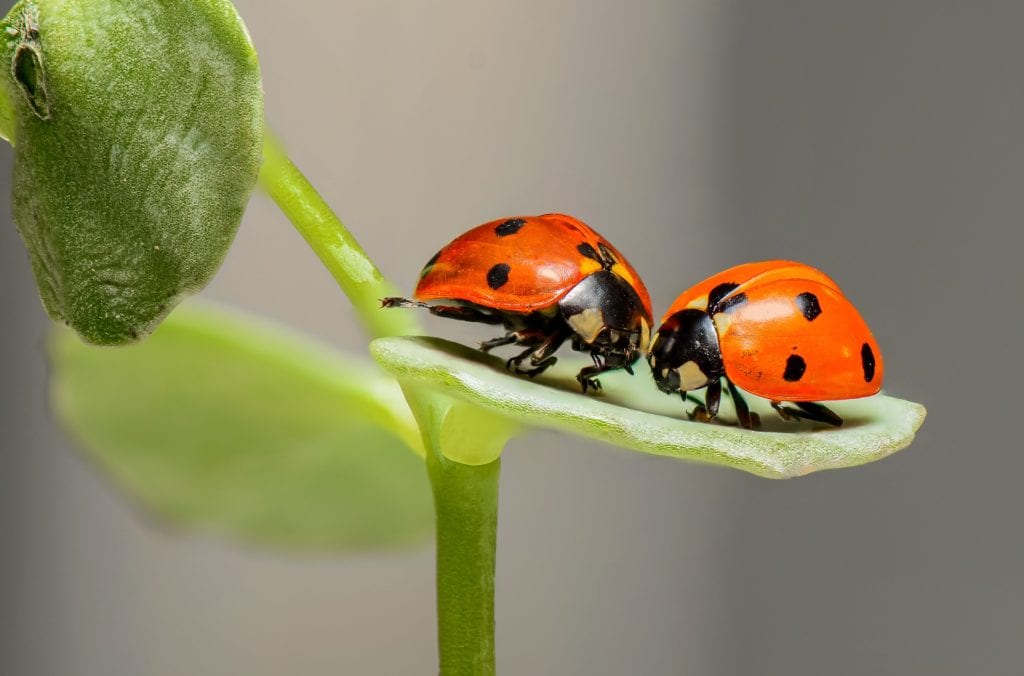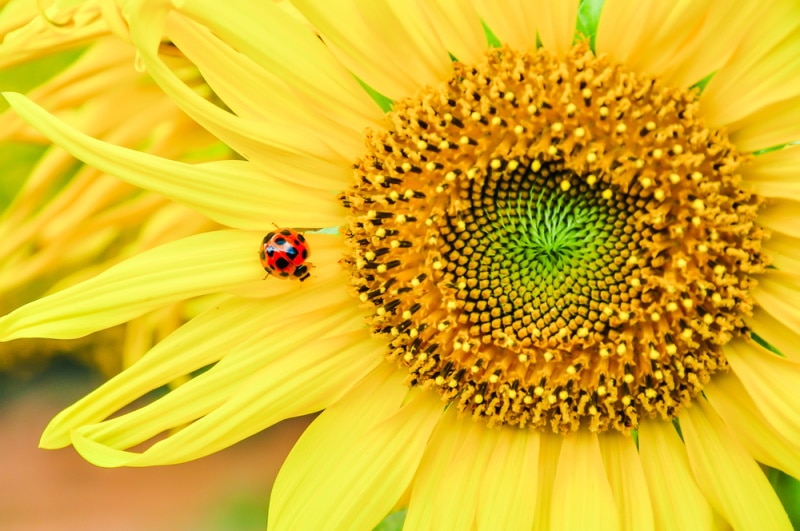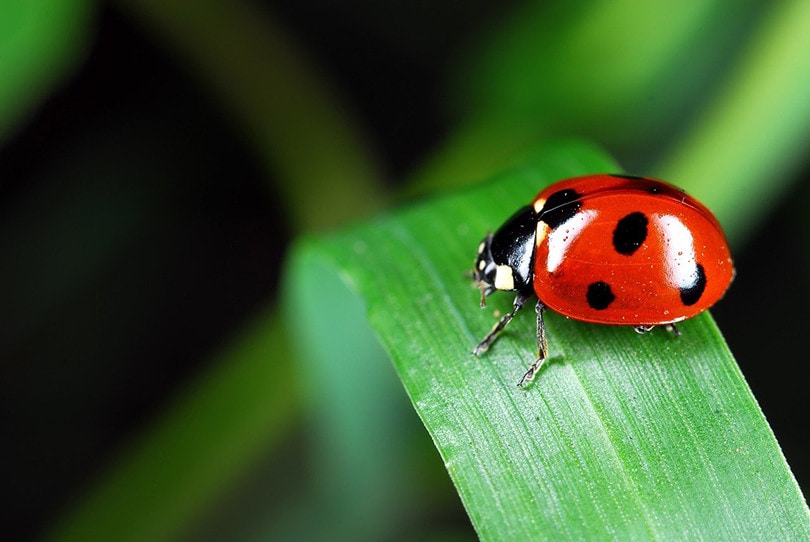What Is the State Insect of New York? How Was It Decided?
-

- Last updated:

Deeply rooted in modern civilization, most of New York City is carpeted with towering skyscrapers, historic mansions, and fancy golf courses. It is artistically sculpted with man-made structures such as the Empire State Building, Central Park, and Times Square in Manhattan, the Statue of Liberty in New York harbor, and the over 130 years old Brooklyn Bridge connecting Manhattan and Brooklyn boroughs.
Of course, there is more to New York State than the city it’s so famous for, and over the years the rich diversity of unique animals and insects has led to the legislature to protect certain species in the state. In the late 1980s, the nine-spotted ladybug was named the official state insect.

How Did New York Designate the 9-Spotted Ladybug as the State Insect?
The nine-spotted ladybug was designated as the state insect of New York through the Legislature in 1989. The ladybug’s predatory behavior of feeding on pests might be the main reason for this title.

Unique Features of the Nine-Spotted Ladybug
Over 5,000 species of ladybugs are known today and they are all very similar in appearance.
The nine-spotted ladybug (Coccinella novemnotata) or C-9, is between 0.3 and 0.5 inches long with an armored elytrum and pronotum. Elytra is a scientific name for hardened sheath-like forewings that protects the ladybug’s softer wings. On each deep orange elytra are four black spots. The ninth spot is split between the elytra by a black suture. Some sources refer to the spot as the black coloring of the scutellum, which is a triangle-like structure on the base of folded wings.
Historically, they were spread all over North America, from the northern parts of Mexico to the fringes of Alaska and in many Canadian forests. In their native homes, mature female ladybugs mate and lay clusters of 10 to 30 pale yellow eggs under the leaves. During her short lifetime, egg production numbers almost 600, and among them are unfertilized eggs—she deliberately does this to provide food for young larvae, especially when the competition is high.
The location of eggs is important to hide them away from predators, protect them from harsh weather, and be near a source of food. Under favorable conditions, young larvae emerge after 10 to 15 days and need another 30 days to develop into adults through complete metamorphosis. Complete metamorphosis is a type of physical development involving an insect hatching, developing into an actively feeding larva, and pupating into adulthood.
A ladybug pupa does not feed, instead attaches itself motionless onto a leaf. The body undergoes a remarkable transformation from a crawling caterpillar-like spiked bug into an adorable bright beetle. Mature insects will continue feeding, and as fall sets in, they will find holes, tree logs, and leaf litter to overwinter in and re-emerge in spring.
Note that, unlike most North American insects, which reproduce once a year, a ladybug may lay eggs in spring and summer.

Are Ladybugs Disappearing in New York?
Unfortunately, yes. Once the most common ladybug in northeastern parts of the USA, the insect started disappearing in the early 1980s. In fact, some sources say it was on a steep decline even before the legislature approved it as the state insect.
According to experts, the decline may be due to the introduction of imported Asian lady beetles. It was brought to the state in the 1970s to reduce pest population and overdependence on insecticides but quickly became an invasive species. Asian beetles are adaptable and competitive—a new challenge that the C-9 could not keep up with.
Did the State Assembly Try to Replace the Nine-Spotted Beetle With Another Insect?
After disappearing for over 25 years, the State Assembly tried to replace it with an unnamed species of ladybug in 2006. Luckily, the attempt fell victim to legislative inaction. Realizing how dire the situation was, non-profit organizations started mapping out their sightings.
The Lost Ladybug launched a survey in the 2000s, and as of 2006, less than six nine-spotted ladybugs had been spotted in North America. None of them was in New York. Then one summer day, a lone ladybug was spotted on a sunflower plantation in Amagansett. This was the last sighting of the beetle in the state to date.

Can the Nine-Spotted Beetle Make a Comeback?
With nature, nothing is impossible, and the little beetle could make a glorious comeback. Of course, this needs human help because we are the major cause of insects’ decline.
Let Your Lawn Be a Natural Habitat
In the USA, there are over 40 million acres of lawns. While on an individual scale, this is a small area, cumulative efforts can convert them into a large natural habitat for insects.
Because many insects need little space, partial conversion of the lawn into minimal disturbed natural vegetation will attract insects. Leave areas around the hedge or near gardens to nature. Various plant species will colonize it, attracting many insects, including beetles.
Grow Native Plants
Native animals have a tight ecological relationship with native plants, which has been shaped for millions of years. Instead of importing ornamental species, grow native plants. Insects rely on them as a source of food and nesting area.
Research shows that growing more native plants also indirectly attracts songbirds which feed their offspring with insects.

Reduce the Use of Herbicides and Pesticides
Many pesticides harm crop-friendly ladybugs unintentionally. Despite lacking any other means of controlling harmful insects, limit the use of chemicals. Only spray when it is necessary, and do it sparingly.
Advocate for the Ladybug’s Future
Reaching out to others through formal and informal education may be the most powerful tool to ensure the survival of beetles. Reach out to kids between the ages of 6 and 12, the time when a natural bond with animals is forming, to teach them how to protect insects. Use initiatives such as insect education programs, or organize insect-themed walks on weekends to collect and identify insects in the neighborhood.
Parents, too, should not be left behind. Their influence and positive thinking will raise insect-loving generations.


Conclusion
The nine-spotted ladybug beetle has been New York’s official state insect since 1989. Unfortunately, their population has dropped alarmingly due to the introduction of Asian ladybugs. But we can stop them from going extinct by reducing the use of herbicides and creating an insect-friendly hub around our homes.
Featured Image Credit: sunakri, Shutterstock
Contents
